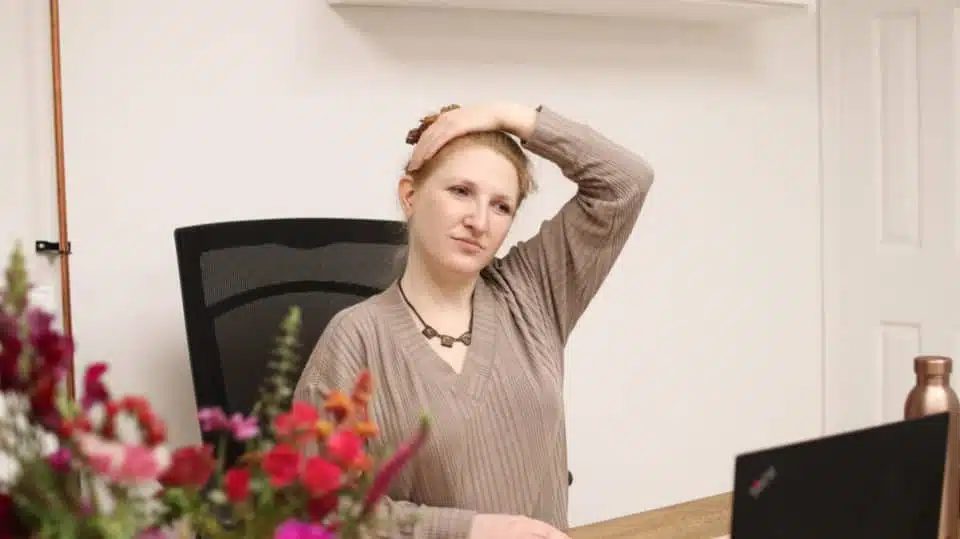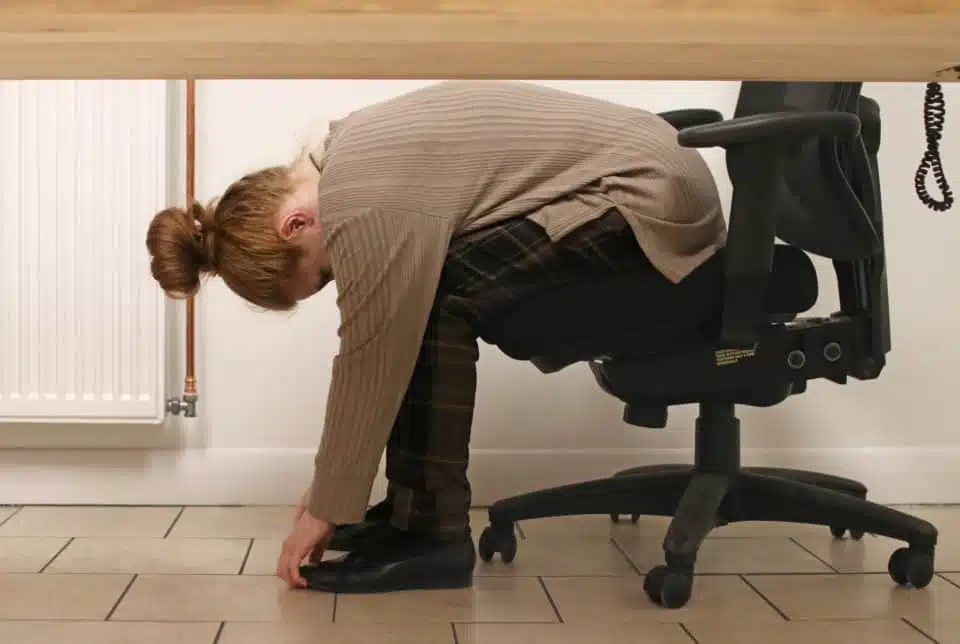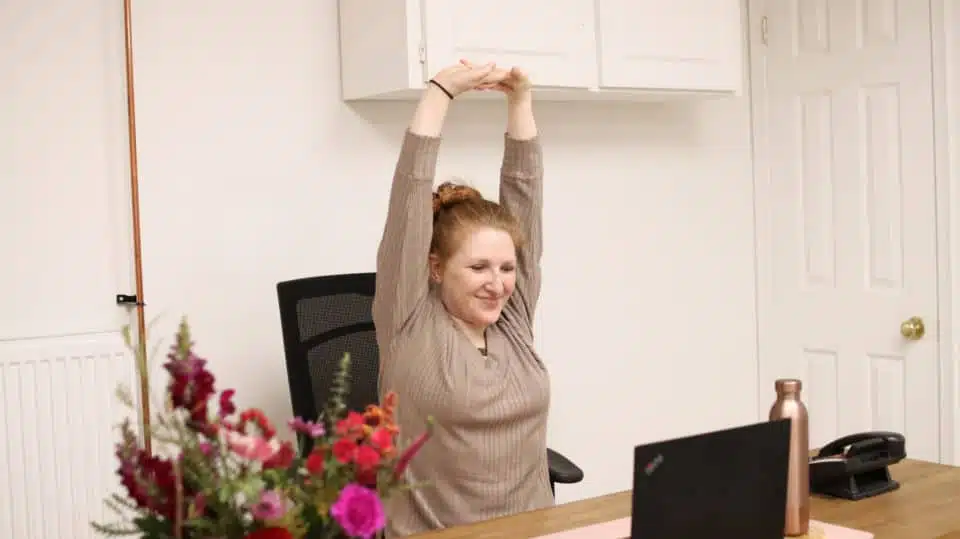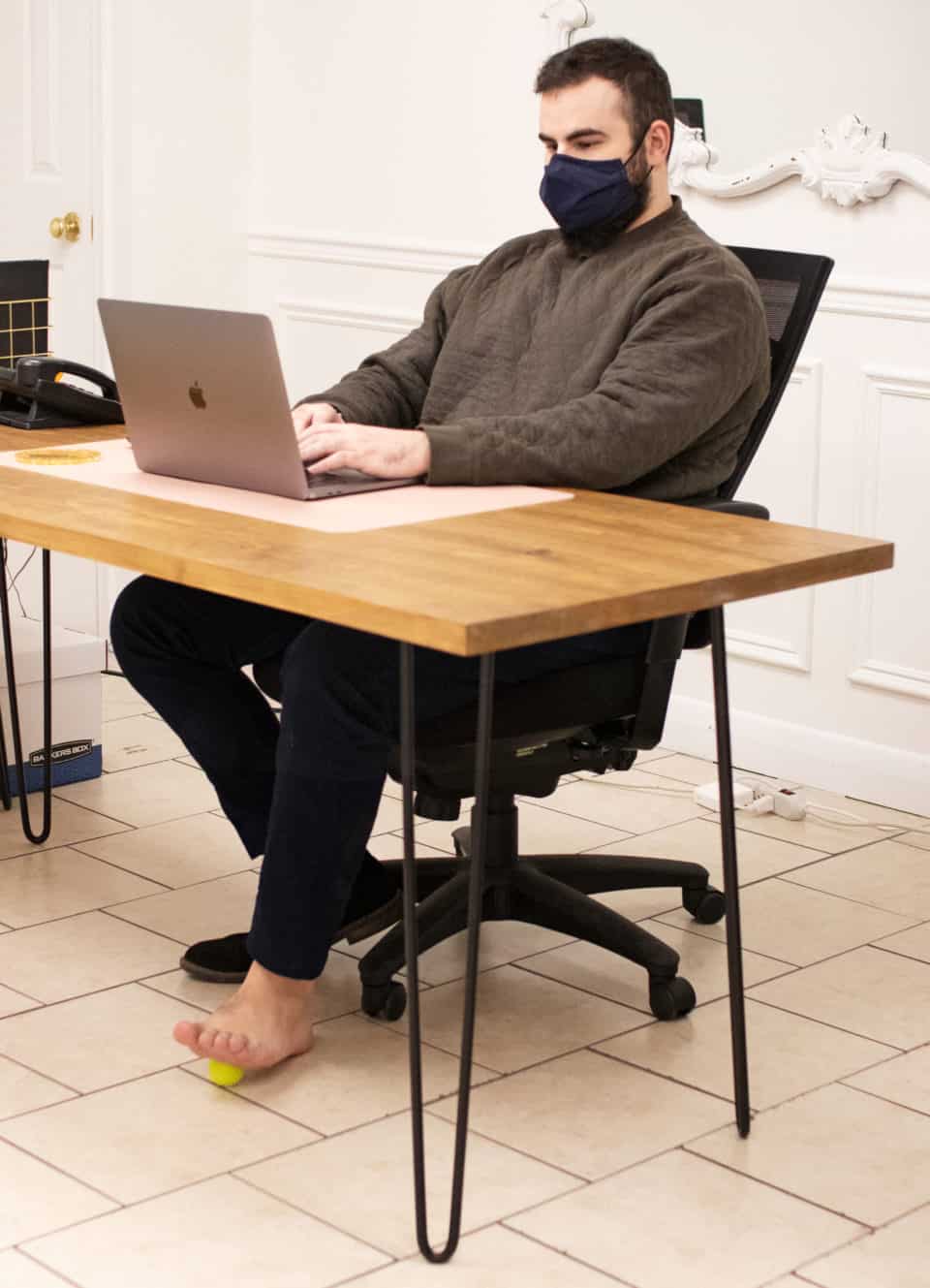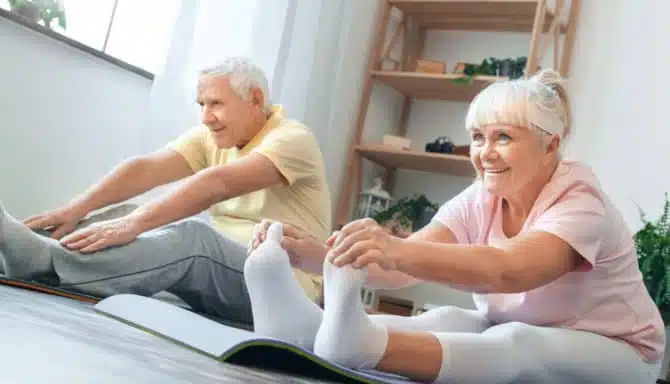A solid stretching routine goes hand in hand with your fitness regimen. However, for those who are new to the world of fitness, it can be difficult to know when you’re supposed to stretch.
Many people with disabilities, foot conditions and mobility concerns may also assume stretching isn’t possible for them. Rest assured, stretching is a healthy practice that can help you manage your mobility limitations and boost physical activity. In fact, stretching is very adaptable and highly recommended for people with pain, injuries and mobility concerns.
It’s also crucial to know what muscles to target and how to trigger a response from those muscles. Having a stretch in your back pocket for each part of the body will help you on your quest towards reaching your fitness goals!
Before we get to your perfect stretching routine, let’s break down why stretching is so important and give you as much info as possible so you can proceed!
Why You Should Stretch
As you continue achieving your fitness and health goals and learn new tips, you’ll soon notice the benefits of stretching. Whatever your health condition and level of activity, stretching is vital to our physical health and can help treat many common joint and muscle conditions in a few different ways:
- Regular stretching works wonders for flexibility and your range of motion.
- Stretching restores and loosens our muscles, equipping them to handle regular movement and activity.
- When your muscles can endure more physical activity, they become stronger over time.
- Flexibility decreases the risk of sustaining injury, and experiencing inflammation and over-exertion.
- These benefits combined help with pain management and reduce pain during activity.
The benefits of stretching are both preventative and therapeutic, which is why stretching is essential for everyone – active or not active, pain or no pain, mobility issues or not.
When You Should Stretch
Stretching the muscles in your back and core region (and feet, of course!) should be a part of your daily routine. This will go a long way toward improving your overall physical health and reducing back pain and foot pain. One of the best practices is to stretch after exerting yourself. Over time, stretching after physical activity – like exercise or even a housework marathon – reduces the sore, achy feeling you have afterward. You can also do dynamic stretching before physical activity (more on that below). This can make your muscles more pliable, which helps them perform better and withstand more work.
Another good way to fit in your daily stretches is to do them after not moving for a long time (working from home, anyone?). This is especially helpful for reducing back pain. Your muscles can feel extra tight after being stationary or after waking up from an awkward sleeping position. Everyone is different, and you’ll soon learn what times work best for you and your body. For instance, if you have morning leg pain, you can focus on stretching your legs before bed and when you wake up.
Just remember: the only wrong time to stretch is never, so stretch whenever you can and whenever works best for you, your schedule and your body.
The Perfect Stretching Routine
The ideal stretching routine will target your core, upper body, limbs and feet (more on that later!). Remember: everything in our body is connected. When one muscle gets tight, it pulls on adjacent muscles, so it’s important not to neglect anything. That’s why stretching your thighs and hips actually helps with foot pain!
Healthy stretching involves a combination of dynamic stretches and static stretches. Dynamic stretching involves gentle swings and motions, and is recommended for warming up before physical activity. Examples of dynamic stretches include neck rolls and leg swings. Static stretching (which is probably what first comes to mind when we think of stretching) involves holding a stretched pose for a period of time. Static stretching is recommended after physical activity (not before).
With static stretching, sometimes knowing how long to hold a stretch can be confusing, since Dr. Google can give a lot of conflicting information. The general rule of thumb: the bigger the muscle, the longer you’ll hold it. So neck stretches will be held shorter than your meaty glute muscles. If you have inflammation, you may need to stretch that area a bit longer. You can also try stretch in intervals, where you hold a stretch for 15 seconds, release, and then hold again for another 15 seconds, etc. Over time, you’ll find what worse best for you.
For overall physical health and mobility, we recommend stretches that target the following areas:
- Upper Body (neck, shoulders, chest): Hold 15 – 30 seconds per stretch
- Midsection (torso, mid back and low back): Hold 30 – 60 seconds per stretch
- Pelvis and Thigh area (hip flexors, gluteal muscles, groin, hamstrings, quadriceps): Hold 60 seconds per stretch
- Limbs (arms, calves): Hold 30 – 60 seconds per stretch
Check out darebee.com and Self.com for some great stretches to try. We’ll also give you our top chiropodist-recommended stretches in future posts, so stay tuned!
Important Tips To Remember
- When performing a stretch, only extend or push yourself as far as your body allows.
- Pay attention to the target muscle area! If you don’t feel the effects in the right muscles, try to adjust your form.
- You should hold your positioning longer when you stretch larger muscles.
- Some of the best stretches target more than one muscle area, like the cat-cow pose!
- There are many ways to stretch the same muscle, so if a particular stretch isn’t working for you, try a different one.
What About Foot Stretches?
Your feet are what hold you up, and as the foundation of your fitness goals, they deserve attention and care! Stretching your feet and ankles is just as critical as stretching other parts of the body. Poor foot health and neglecting your feet can stop you from reaching your fitness goals. Just like the other stretches we’ve discussed, you should stretch your feet every day.
Foot stretches are also a major part of treatment plans for several foot conditions, including:
- Plantar fasciitis
- Achilles tendonitis
- Metatarsalgia(ball of foot pain)
- Arthritis
- Ankle problems (clicking ankle, stress fracture recovery, flat feet, etc.)
For easy-to-follow foot stretches, check out our Instagram foot stretching series and our Pinterest board.
